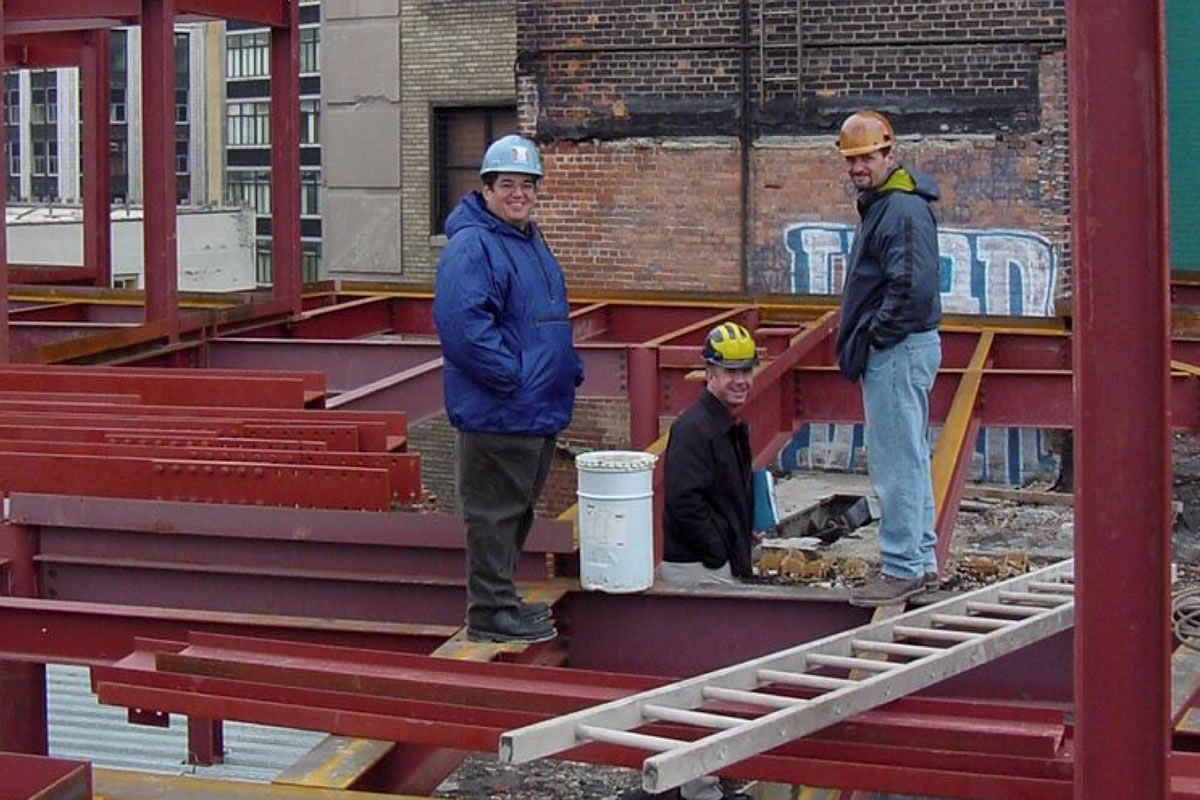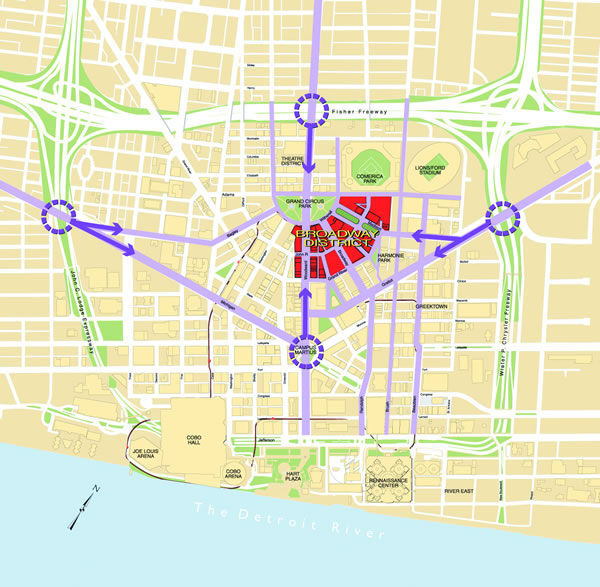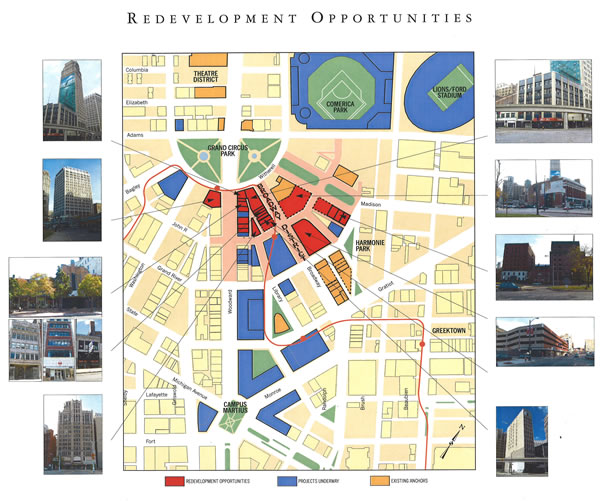May 24, 2019
Minds On Design: Eric Larson
Developing the Broadway District:

Michael Poris and Doug McIntosh on the roof of the Madison Theater Building in 2002 during the development of the Madison building addition.
At McIntosh Poris Associates, we believe in the power of interactive city building, and that with the right approach, architecture can change the course of a city. This belief guides our work in preserving and revitalizing the architecture of Detroit – from individual buildings to entire neighborhoods – and has connected MPA with clients and friends to create developments with a lasting impact. Eric Larson is one such client and friend and to celebrate the 20th anniversary of our Broadway District plan for Larson Realty Group. We had a bit of a reunion to discuss how it influenced the way we approach development and set the tone for the opportunities being realized today.
We met Larson in 1995. Coming from Chicago to Detroit in the 1980s, he arrived to a city with a renewed interest in its downtown core after a wave of development that included the Renaissance Center. Larson, himself came to Detroit through Hines to build One Detroit Center on Woodward and Larned. His work with Hines instilled the importance of the thoughtfulness of design and quality of space that shapes the mindset of large-scale development, yet he found a huge gap between the architectural planning of buildings and the legitimate planning of districts in Detroit.
Remember, this was in the 90s. And at that time, there was an under-utilized area between Grand River and Witherell, Woodward and John R. that was ready and waiting for a larger district plan. The neighborhood had good structures – with more than 10 historic buildings, boulevards, direct access to public transportation, theater and other culture – yet, no one had envisioned it as a thriving contemporary district. Of course, we saw it and Larson engaged MPA to help build a plan that would, in his words, “legitimize a district approach in the city and create an attractive destination that also provided opportunity for small, local businesses and residents.”
Together with Larson, MPA designed a plan that encouraged façade improvements, maintaining historic buildings that may have otherwise been demolished as well as the streetscape. The unique aspect of the Broadway District is that the layout of the buildings and street is “comfortable,” it feels a bit removed from the buzz of downtown while still being a key artery and there is a great mix of uses from residential to commercial. Our plan sought to preserve this intimate feeling in the cityscape by proposing the preservation of the buildings, some of which date back to the early 1890s, inside and out. From the restoration of the plaster reliefs inside the Metropolitan building to the addition of the Madison Theater Building that brought new office space and a favorite rooftop spot to the city. Adaptive re-use was a huge part of the plan, which redeveloped the old Eureka Vacuum headquarters building into one of the first new restaurants the city had seen in years. People looked to the lofts in the Eureka Building as an exciting example of what true downtown living could look like in Detroit.
“The most exciting thing is that some of our action preserved the opportunity for the great development we see today,” said Larson, “and not just with the buildings, but how they are developed. Of course, it is fulfilling to see the Madison building fully restored after Bedrock purchased it in 2011. But just as importantly, we created a foundation early on for people in the neighborhood to be a part of development. Community meetings are something MPA does really well and the process we developed for engaging all the stakeholders in the Broadway District really shaped a new approach for successful development in Detroit.”
Looking back with Larson on the impact of the Broadway District plan, we asked him to compare 1999 and 2019. How has the city changed? What did we learn 20 years ago that still helps us today? “In 1999, this district was the first to demonstrate value in preserving as opposed to creating something new,” Larson said,” a lot of the tools and tenacity we use in development today really stemmed from that project. In 1999 there was this general belief that Detroit was ready for re-development, but there were still things to learn (optimizing historic tax credits being an important one).” Until recently, Larson believes development was more about “keeping the patient alive” than “bringing it back to health.” But it is all necessary, “I am happy with my efforts in encouraging sustainable district development but I give MPA a lot of credit. Not as many people realized that value in the architecture and history here. They have their scars to show for it but where we are today would not have happened without their dedication and hard work just to keep buildings that defined our city scape for generations.”

